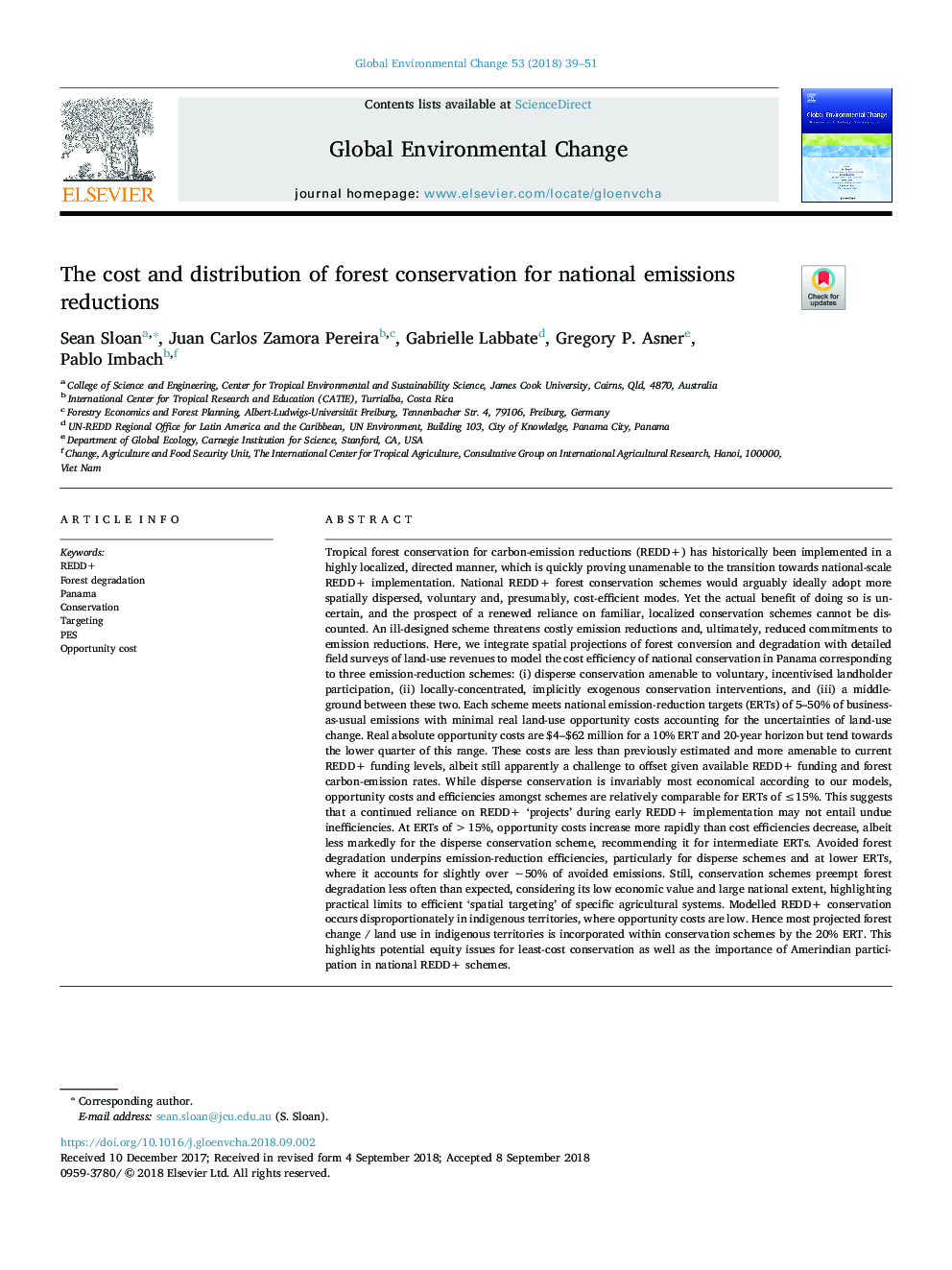| کد مقاله | کد نشریه | سال انتشار | مقاله انگلیسی | نسخه تمام متن |
|---|---|---|---|---|
| 10154100 | 1666265 | 2018 | 13 صفحه PDF | دانلود رایگان |
عنوان انگلیسی مقاله ISI
The cost and distribution of forest conservation for national emissions reductions
ترجمه فارسی عنوان
هزینه و توزیع حفاظت جنگل برای کاهش انتشارات ملی
دانلود مقاله + سفارش ترجمه
دانلود مقاله ISI انگلیسی
رایگان برای ایرانیان
کلمات کلیدی
موضوعات مرتبط
علوم زیستی و بیوفناوری
علوم محیط زیست
علوم زیست محیطی (عمومی)
چکیده انگلیسی
Tropical forest conservation for carbon-emission reductions (REDD+) has historically been implemented in a highly localized, directed manner, which is quickly proving unamenable to the transition towards national-scale REDD+ implementation. National REDD+ forest conservation schemes would arguably ideally adopt more spatially dispersed, voluntary and, presumably, cost-efficient modes. Yet the actual benefit of doing so is uncertain, and the prospect of a renewed reliance on familiar, localized conservation schemes cannot be discounted. An ill-designed scheme threatens costly emission reductions and, ultimately, reduced commitments to emission reductions. Here, we integrate spatial projections of forest conversion and degradation with detailed field surveys of land-use revenues to model the cost efficiency of national conservation in Panama corresponding to three emission-reduction schemes: (i) disperse conservation amenable to voluntary, incentivised landholder participation, (ii) locally-concentrated, implicitly exogenous conservation interventions, and (iii) a middle-ground between these two. Each scheme meets national emission-reduction targets (ERTs) of 5-50% of business-as-usual emissions with minimal real land-use opportunity costs accounting for the uncertainties of land-use change. Real absolute opportunity costs are $4-$62 million for a 10% ERT and 20-year horizon but tend towards the lower quarter of this range. These costs are less than previously estimated and more amenable to current REDD+ funding levels, albeit still apparently a challenge to offset given available REDD+ funding and forest carbon-emission rates. While disperse conservation is invariably most economical according to our models, opportunity costs and efficiencies amongst schemes are relatively comparable for ERTs of â¤15%. This suggests that a continued reliance on REDD+ 'projects' during early REDD+ implementation may not entail undue inefficiencies. At ERTs of >15%, opportunity costs increase more rapidly than cost efficiencies decrease, albeit less markedly for the disperse conservation scheme, recommending it for intermediate ERTs. Avoided forest degradation underpins emission-reduction efficiencies, particularly for disperse schemes and at lower ERTs, where it accounts for slightly over â¼50% of avoided emissions. Still, conservation schemes preempt forest degradation less often than expected, considering its low economic value and large national extent, highlighting practical limits to efficient 'spatial targeting' of specific agricultural systems. Modelled REDD+ conservation occurs disproportionately in indigenous territories, where opportunity costs are low. Hence most projected forest change / land use in indigenous territories is incorporated within conservation schemes by the 20% ERT. This highlights potential equity issues for least-cost conservation as well as the importance of Amerindian participation in national REDD+ schemes.
ناشر
Database: Elsevier - ScienceDirect (ساینس دایرکت)
Journal: Global Environmental Change - Volume 53, November 2018, Pages 39-51
Journal: Global Environmental Change - Volume 53, November 2018, Pages 39-51
نویسندگان
Sean Sloan, Juan Carlos Zamora Pereira, Gabriel Labbate, Gregory P. Asner, Pablo Imbach,
